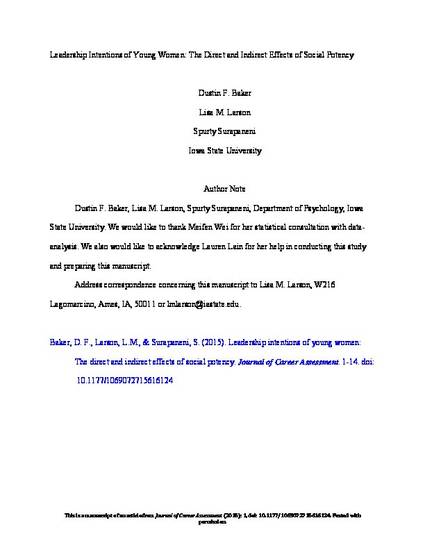
The underrepresentation of women in leadership positions is a nagging problem in American society. Young women’s leadership intentions drive them to assume leadership opportunities despite barriers. The role of one particular personality trait most identified with leadership, namely, social potency, was examined in directly and indirectly predicting leadership intentions. 124 female college students were sampled. As hypothesized, social potency directly predicted leadership self-efficacy, leadership interest, and one of the two indicators of leadership intentions. Moreover, social potency indirectly predicted leadership intentions through leadership self-efficacy. A bootstrap procedure yielded significant indirect effects of social potency on leadership self-efficacy, leadership interest, and leadership intentions.
Available at: http://works.bepress.com/lisa_larson/13/

This is a manuscript of an article from Journal of Career Assessment (2015): 1, doi: 10.1177/1069072715616124. Posted with permission.